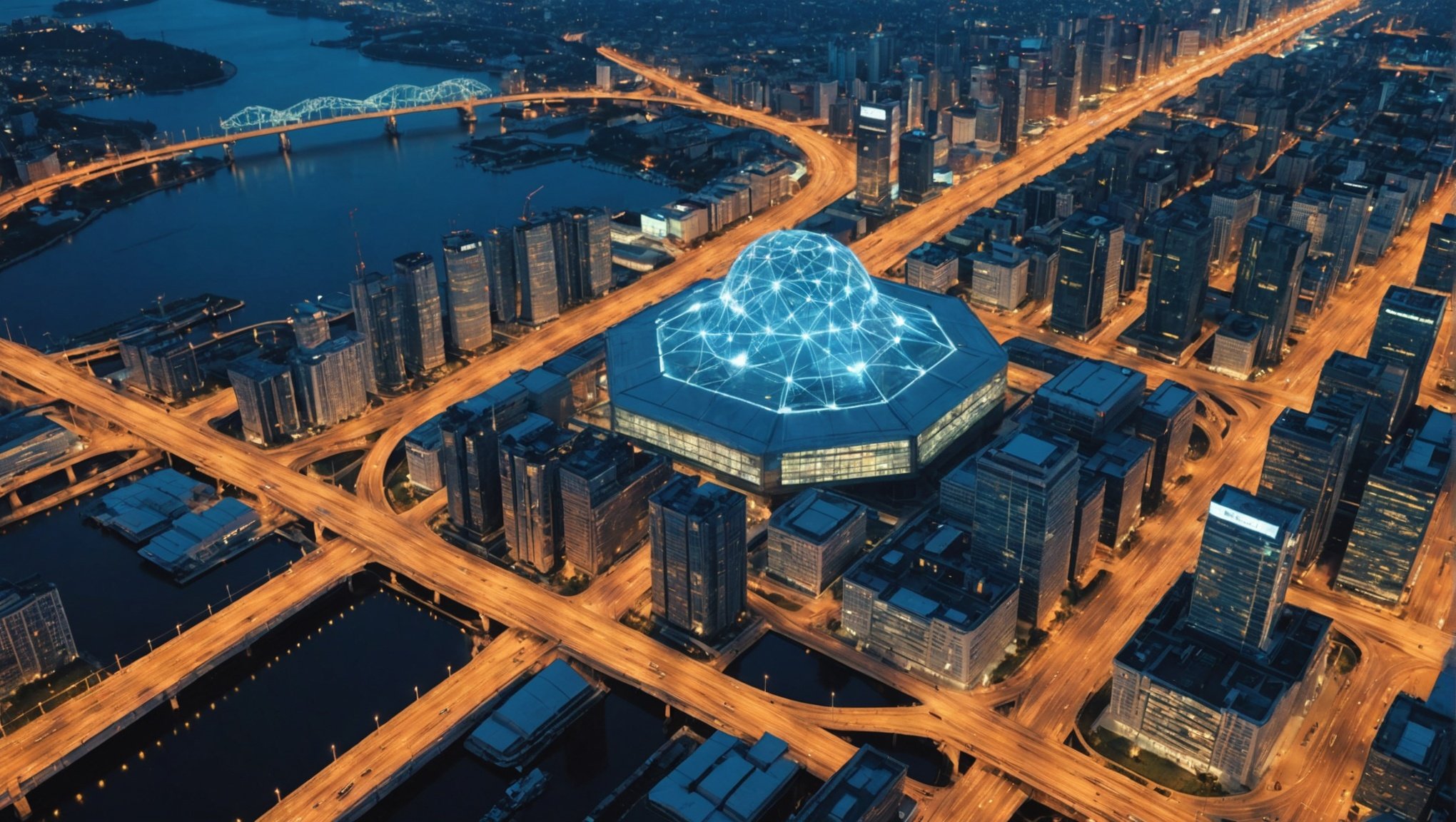The Importance of AI in Modernizing Critical Infrastructure
In today’s rapidly evolving world, critical infrastructure faces numerous challenges, including aging systems and growing demands for efficiency and resilience. Artificial Intelligence (AI) plays a vital role in addressing these challenges by enhancing adaptability and improving response times in the face of unexpected events.
One of the key benefits of implementing AI in critical infrastructure is its ability to perform predictive maintenance. Predictive maintenance relies on AI algorithms to analyze data from sensors and networks, identifying potential issues before they cause service disruptions. This proactive approach minimizes downtime and extends the lifespan of infrastructure components.
In parallel : Elevate your business efficiency with ai employees today
Network modernization is another area where AI proves invaluable. By optimizing data flow and improving decision-making processes, AI ensures that networks operate at peak efficiency. This, in turn, boosts the reliability of critical facilities, such as power plants, water treatment centers, and transportation systems.
Moreover, AI enhances infrastructure resilience by providing real-time data analysis and decision-making capabilities. In crisis situations or natural disasters, AI systems can rapidly assess conditions and deploy resources effectively to mitigate harm.
In parallel : Mastering Real-Time Fraud Detection in E-Commerce: A Comprehensive Guide to Building Your Own Machine Learning Model
By integrating AI into existing systems, operators benefit from improved operational efficiency and enhanced safety measures, ultimately leading to a robust, future-ready infrastructure.
Strategies for Integrating AI into Network Design
Successfully embedding AI into network design requires deliberate planning and execution. Here, we highlight the essentials for integrating AI in networks, blending expertise with concise strategy.
Assessing Infrastructure Needs
Understanding your infrastructure’s capabilities is crucial. Begin by evaluating the current network components to determine what upgrades may be necessary for adaptable infrastructure. This step ensures that your existing hardware can support advanced AI technologies seamlessly. An infrastructure assessment reveals potential bottlenecks, helping shape the integration process.
Identifying Key Areas for AI Implementation
It’s important to pinpoint where AI can bring the most value. Focus areas for AI tools often include monitoring and analytics. These areas benefit significantly from AI’s predictive capabilities. Knowing where to implement AI allows for targeted improvements in performance and efficiency, providing a laser-focused approach rather than a broad, unfocused implementation.
Developing a Phased Integration Plan
Implementing a phased integration plan is vital for AI integration success. This involves a step-by-step approach, starting from planning, followed by testing, and finally full deployment. Phasing the integration is beneficial as it allows for addressing unforeseen challenges without overwhelming the network. A methodical approach is not only efficient but mitigates risks associated with comprehensive overhauls.
Case Studies of Successful AI Implementations
Discovering AI success stories reveals valuable insights into how this technology transforms various sectors. Critical infrastructure like energy and transportation can significantly benefit from strategically implemented AI solutions. Through detailed case studies, we see how these industries leverage AI to enhance resilience and efficiency.
In the energy sector, AI’s ability to analyze massive data sets has revolutionized predictive maintenance. By anticipating equipment failures before they occur, companies not only reduce downtime but also save on repair costs. This proactive approach exemplifies how AI implementations lead to more resilient operations.
Transportation, on the other hand, benefits from AI in route optimization. By analyzing traffic patterns and environmental factors, AI helps streamline logistics, which results in timely deliveries and lower fuel consumption. A notable lesson learned is the importance of integrating AI with existing systems to maximize the impact.
The quantifiable impacts of these strategies include substantial cost savings, improved service reliability, and reduced energy consumption. These examples underscore AI’s role in boosting operational efficiency across sectors. As businesses evaluate their digital transformation strategies, these stories offer a guiding framework on how to leverage AI successfully.
Technical Guidance on Infrastructure Improvements
Upgrading your infrastructure strategically requires precise evaluations of current systems, careful selection of AI technologies, and planning for future growth. Understanding these aspects enhances efficiency and prepares your business for evolving technological landscapes.
Evaluating Current Infrastructure Systems
A thorough systems evaluation is the first step. Begin by assessing the existing architecture—analyze performance, security, and scalability. What are the present limitations? Identifying performance bottlenecks and security vulnerabilities sets the groundwork for effective infrastructure upgrades. This evaluation guides the path for technical guidance, ensuring tailored solutions to meet your effectiveness goals.
Selecting AI Tools and Technologies
Choosing the right AI tools and technologies involves several criteria. First, determine your specific needs. Do the algorithms meet your operational requirements? Consider integration capabilities—will they seamlessly align with existing systems? Evaluations of vendor support and ongoing technical guidance are also vital for sustained success.
Ensuring Scalability and Future-Proofing
Planning for future demands is a must. Design your infrastructure for scalability, allowing for infrastructure upgrades without major disruptions. Consider elastic storage solutions and modular software architecture. Future-proofing involves anticipating technological advancements—this guides your infrastructure towards a resilient and adaptive future, supported by continuous AI evaluation.
Future Challenges in Critical Infrastructure Management
The future of critical infrastructure management involves navigating a landscape filled with emerging threats and vulnerabilities. Anticipating these challenges is essential for maintaining the integrity of systems crucial to daily life. As technology advances, so do the tactics of potential threats, making it vital to stay ahead with innovative solutions.
The evolving role of AI stands as a cornerstone in addressing these challenges. AI developments offer robust tools for predictive analysis, enabling quicker identification of anomalies and potential breaches. By leveraging machine learning, AI can adapt over time, becoming more adept at detecting patterns and unusual behaviours that could signal a threat.
Looking at long-term sustainability and adaptability in network design is another area of focus. Infrastructure must not only withstand current threats but also be flexible enough to evolve with future demands. This requires a proactive approach to system design, incorporating elements that can be easily upgraded without overhauling the entire network.
To sum up, the key to successful infrastructure management lies in embracing AI developments and maintaining a forward-thinking mindset. By doing so, we can better safeguard our critical systems against the unpredictable challenges of the future.
Benefits of Building a Future-Proof Network
Creating a future-proof infrastructure offers significant advantages, including enhanced resilience and AI-driven improvements. Emphasizing operational resilience ensures that networks remain robust against disruptions.
Enhancing Operational Resilience
Integrating AI into networks brings notable resilience benefits. AI can predict and mitigate potential issues before they impact operations, reducing downtime and maintaining continuity. For example, AI can analyse data patterns to detect anomalies, allowing for preemptive actions.
Cost Reduction and Efficiency Improvements
When AI is part of a future-proof infrastructure, it leads to cost-effectiveness. AI optimises resource allocation by analysing usage patterns and automating routine processes. This proactive approach reduces operational costs and increases efficiency. Consider, for example, a company using AI for predictive maintenance, preventing costly equipment failures.
Supporting Long-Term Sustainability Goals
Aligning infrastructure with long-term sustainability goals is crucial. A future-proof network not only enhances operational resilience but also supports eco-friendly initiatives by reducing energy consumption and emissions through smart resource management. AI can play a pivotal role here, as evidenced by its ability to optimise energy usage based on real-time demand.
Building such a network is both a strategic necessity and a forward-thinking opportunity. By focusing on adaptability and technological advancements, organisations can secure a resilient and sustainable future.











